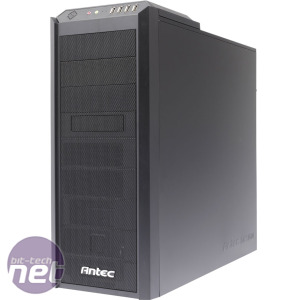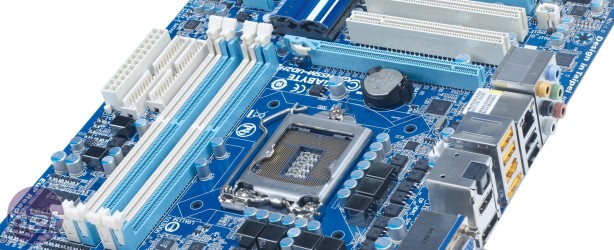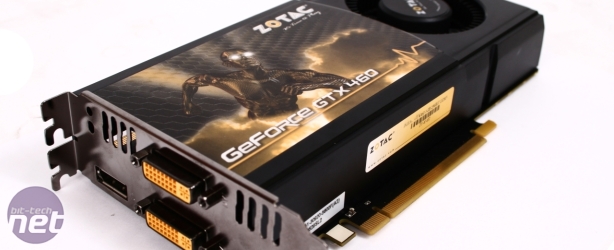PC Hardware Buyer's Guide March 2011
March 10, 2011 | 15:27

Affordable All-Rounder March 2011
This system is designed to be our recommendation for those looking for maximum performance per pound (we’re British, y’know). The power of a fast dual-core processor is still perfectly adequate for everyday use and gaming – add a decent amount of memory and the most potent graphics card you can afford, and you’ll be fine for the foreseeable future on a 1,680 x 1,050 screen.| Affordable All-Rounder | |||
| Product | UK Price (inc VAT) | US Price (ex tax) | |
| CPU | Intel Pentium G6950 2.8GHz | £70 | $100 |
| Motherboard | Gigabyte GA-H55M-UD2H | £70 | $95 |
| Memory | 4GB 1,333MHz DDR3 | £40 | $45 |
| Graphics Card | Nvidia GeForce GTX 460 768MB | £125 | $150 |
| PSU | Antec Earthwatts 380W | £35 | $40 |
| CPU Cooler | Arctic Cooling Freezer 7 Pro | £15 | $30 |
| Case | Antec One Hundred | £40 | $60 |
| Optical drive | SATA DVD-RW | £15 | $20 |
| Storage | 500GB SATA 3Gbps | £30 | $50 |
| Overall Price: | £440 | $590 | |
New This Month
 The only new addition to our affordable all-rounder build this month is the excellent Antec One Hundred case. At this end of the market, you’re not going to get an all-singing all-dancing extravaganza of a case, but the One Hundred offers a solid chassis with good cooling and a clean and tidy appearance, which is a bargain for £40.
The only new addition to our affordable all-rounder build this month is the excellent Antec One Hundred case. At this end of the market, you’re not going to get an all-singing all-dancing extravaganza of a case, but the One Hundred offers a solid chassis with good cooling and a clean and tidy appearance, which is a bargain for £40. It’s also a little bit more visually distinctive than the Antec Three Hundred it replaces, and has a nifty storage spot on its roof, which is something the Three Hundred lacks.
The build has otherwise remained the same, although there have been a number of small price changes across the board. We're only talking about a few pounds here and there, but these changes have resulted in the overall price of the system has dropping very slightly (particularly in the US), which is always a welcome bonus.
And The Rest
Nestled at the heart of our trusty affordable all-rounder build is the immensely overclockable Intel Pentium G6950. This CPU is a little powerhouse when pushed, and its small amount of cache and relatively simple design should enable you to get the chip up to 4GHz without a hitch. At these speeds, it makes mincemeat of similarly priced CPUs and tears through our media benchmarks to boot.Housing the G6950 is the Gigabyte GA-H55M-UD2H, which is a small, tidy board that proved itself to be a competent overclocker during our testing. Its maximum base clock of 205MHz should, when coupled with the 21x CPU multiplier of the G6950, give you the potential to hit a heady 4.3GHz maximum CPU clock speed, which isn't bad for a system that costs just £440. The board also supplies an ample five SATA 3Gbps ports for later expansion, and an extra 16x PCI-E slot.

Visuals are handled by the capable Nvidia GTX 460 768MB, which will only set you back around £120 now, making it a bargain for a card that can handle just about anything at 1,680 x 1,050. There's an argument for including the equally excellent AMD Radeon HD 6850 1GB, but these cards currently retail for around £150, and including one pushed our total price up just a little too high for our tastes. If, however, you have a budget closer to £500, then you’ve got our blessing to swap the green card out for the red one if you wish.
We played with the idea of using the reference CPU cooler for this system to keep the price down as well, but given that we wanted to overclock the CPU, we decided to buy a better performing third-party cooler after all. The Arctic Cooling Freezer 7 Pro is cheap and quiet, and has three heatpipes to cope with a spot of overvolting and overclocking.
We’ve also chosen 1,333MHz memory, as it’s slightly cheaper than 1,600MHz RAM and won’t limit overclocking too much. For example, if we were to aim for an overclock of 4GHz, we’d have to use a Base Clock of 220MHz (as 220 x 18 = 3,960) – the H55M-UD2H has a 6x memory strap, so we can use that to keep the memory within its limits (1,320MHz). Memory rated at 1,066MHz is roughly the same price as 1,333MHz RAM, so you may as well get the faster DIMMs to try to future-proof the system a little.

Finally, power is handled by an Antec Earthwatts 380W. We said in Custom PC that this PSU 'proved able to output a stable voltage from all of its rails [and] it’s also reasonably efficient.' As this isn't a monster PC, a 380W power supply is fine.
If you haven't got a copy already, you might want to factor in a copy of Windows 7 too. If you're confident that you won't be upgrading much, then an OEM copy should be fine, but serial upgraders need the pricier retail version.

MSI MPG Velox 100R Chassis Review
October 14 2021 | 15:04








Want to comment? Please log in.